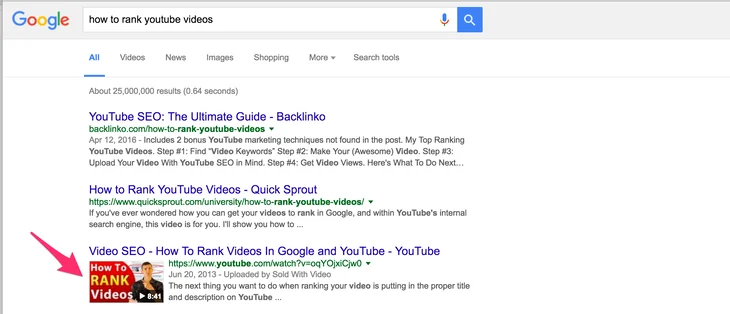Youtube: the unparalled king of video content — home of everything from OK Go’s beautiful productions to your dismal high school play performances and perennial keeper of the internet’s most absurd comment sections.
1 billion people rack up over 4 billion views a day, and this activity adds up to over 6 billion hours of videos watched per month.
It’s staggering.
And the loyal army satisfying those hungry viewers is an incredible amount of creators generating 300 hours of video content per minute.
Source
Needless to say, the dinner table is busy, and in order to be heard amongst the noise, you have to be pointed in your strategy and make sure you’re covering all the SEO bases.
Below are some tips that will help you develop some strong SEO habits on Youtube (or the Youtube as my grandmother calls it) and get your videos a few steps closer to attracting more organic search traffic.
If you’d like to learn more about WHO you should be targeting in the first place, click here.
The Steps
#1 – Keyword Research
First things first: we need to find what people are actually searching for.
Use keyword sites to find high traffic / low difficulty keywords that will attract your target personas.
Click here to use our Persona Tool!
After you’ve found your personas/keywords and have a good idea of what they’ll be searching, create a content audit of your current videos.
By noting what persona, keyword, and buyer’s journey stage each video falls into you can get a clear picture of your overall channel strategy and note what needs to be created, which CTAs should go where, etc..
You can also include your updated descriptions and URLs here, which leads us to our next step:
#2 – Update titles, URLs, and playlists
Once audited, add in the researched keywords to the appropriate videos and come up with good Title / URL / Description combos that match each of your videos.
Make sure your target keyword is incorporated across all of these.
In general, Youtube prefers decently long descriptions (somewhere between 250 and 400 words).
Try and include your keyword a handful times throughout the description and make sure you’re putting the next step you want a user to take in the marketing funnel as a link at the top of the description.
For example: A music video would likely place a link to buy the song or view concert dates at the top of the description.
If possible, build out a potential playlist sequencing a few of them to lead from one to the other too. This helps draw users through your content and buyer’s journey.
#3 – Duplicate and reupload videos if needed
The actual file name of the video uploaded ranks for SEO as well, so if possible, name the video file the same as the keyword title.
You can update this by going to Youtube and duplicating your videos into new videos.
This only applies to videos that don’t have a lot (or any) views yet to mimic creating a new one. If you have a video that already has a good amount of views, ignore this step.
Download and reupload if you have to, and then use the new file name along with the updated titles / urls / descriptions.
#4 – Create thumbnails and appropriate CTAs
Create actionable images to replace the video Thumbnail Youtube grabs using a photo from the video and appropriate CTA text for the video. This is what will show up in a Google search, i.e.:

#5 – Hook up your marketing funnel
Lastly, add appropriate Youtube Cards & Annotations that help nurture from one video to the next or from one video to a free offer etc..
Every video should have a purpose. Whether that’s to primarily spread awareness or present a strong call to action, your videos need to present a clear next step to the user. This helps build cross-traffic and that in turn boosts SEO.
Perhaps you add a Youtube Card that offers a free trial related to the video they’re watching, or maybe you have an annotation that allows viewers to learn more about the video they’re watching — just make sure it’s relevant and is clear in its purpose.
#6 – Promote it!
As you’d expect, videos that receive more views (especially at the front end) are going to make leaps and bounds in SEO ahead of those that don’t.
So, go post those videos as responses to questions on Quora, LinkedIn, Twitter, Facebook — actively engage in promotion/incoporate the video into your content strategy by using techinques such as circular viralocity — whatever it takes to get those views!
There you have it. This isn’t a complete guide, but by following these Youtube SEO best practices you’ll be well on your way.
Cheers.

